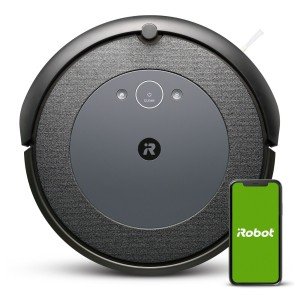10 Easy Steps To Start The Business You Want To Start Robot Vacuum Cleaner Price Business
Understanding Robot Vacuum Cleaner Prices: A Comprehensive Guide
Over the last few years, robot vacuum cleaners have changed the way people clean their homes. Their ease of usage, convenience, and advanced technology have actually made them significantly popular. However, with a huge selection of designs and features offered, possible purchasers typically find themselves asking a vital concern: What should I anticipate to spend for a robot vacuum? This short article aims to clarify the costs connected with robot vacuum, aspects that affect their prices, and suggestions for finding the best device for your budget.
The Price Range of Robot Vacuum Cleaners
Robot vacuum cleaners can vary widely in price. Here, we break down the normal price variety for various categories:
Category
Price Range
Description
Entry-Level
₤ 100 – ₤ 250
Standard functions, appropriate for small spaces, minimal smart innovation.
Mid-Range
₤ 250 – ₤ 500
Improved cleaning abilities, better navigation, some smart functions.
High-End
₤ 500 – ₤ 1,000+
Advanced mapping, effective suction, internet connectivity, and app combination.
Entry-Level Models
Affordable robot vacuums are ideal for those who need a fundamental cleaning tool without luxury functions. Full Posting manage hard floors well but might fight with carpets and are normally less durable.
Mid-Range Models
These vacuums typically come geared up with better suction power and more intelligent navigation systems, making them suitable for bigger homes with combined floor covering. Numerous models in this range offer Wi-Fi connection and smart device control.
High-End Models
High-end robot vacuums are created for severe cleaning lovers. They generally use innovative mapping innovation, effective suction, and built-in cams for improved navigation. Furthermore, many high-end designs permit vacuuming on a schedule and even have the ability to clear their dust bins instantly.
Factors Affecting Robot Vacuum Prices
Comprehending the elements that can affect the price of a robot vacuum can help customers make more educated buying decisions. The following list lays out some essential features that can affect price:
Brand Reputation: Established brand names usually bring a higher price tag due to their reputation and reputable consumer assistance.
Cleaning Technology:
- Suction Power: More effective designs will be more costly.
- Navigation Systems: Advanced models with much better challenge detection and mapping abilities cost more.
Smart Features: Models that provide connectivity to apps, voice control compatibility, and advanced scheduling choices tend to be priced greater.
Battery Life: Longer-lasting batteries usually cause a higher price, as they permit the vacuum to clean bigger locations without requiring to charge.
Dustbin Size: Larger dustbins can be more convenient for consumers, promoting a higher price point.
Additional Features: Some vacuums use mopping abilities, self-cleaning functions, and high-efficiency filters, which can increase their price.
Budget vs. Features: What to Consider
When acquiring a robot vacuum, it's necessary to weigh your budget versus the features you most desire. Here are a number of factors to consider to assist you make a notified decision:
1. Examine Your Home's Needs
Size of Space: Larger homes may take advantage of more advanced vacuums that can cover more ground without frequent charging.
Floor Types: If your home consists of a mix of carpet and difficult floors, choose a vacuum designed for both.
2. Determine Desired Features
- Decide which functions are vital for you, such as scheduling, app connectivity, and cleaning modes.
3. Price vs. Durability
- While a greater financial investment can yield longer-lasting designs, it's worth thinking about lower-cost choices if you're uncertain about long-lasting use.
Often Asked Questions (FAQs)
Q1: Are robot vacuums worth the financial investment?
A1: If you lead a hectic way of life or have movement problems, a robot vacuum can conserve substantial time and effort in cleaning, making them a worthwhile financial investment.
Q2: How frequently should I replace a robot vacuum?
A2: Depending on the model and use, a robot vacuum generally lasts between 3 to 5 years. High-end models may last longer with proper upkeep.
Q3: Can a robot vacuum completely change a conventional vacuum?
A3: While robot vacuums efficiently manage everyday cleaning, they may not replace standard vacuums for deep cleaning, especially in multi-level homes or locations requiring extensive care.
Q4: What is the average lifespan of a robot vacuum?
A4: The life-span of robot vacuums varies by model, however most last in between 3-5 years with routine maintenance, like dustbin emptying and filter changes.
Q5: Do robot vacuums work on carpets?
A5: Yes, however the efficiency will depend on the model. Higher-priced models typically have better suction power to tidy carpets efficiently.
The market for robot vacuum varies, with designs to fit numerous budget plans and cleaning needs. Whether consumers are searching for a standard cleaning tool or an innovative gadget geared up with various smart features, understanding the price ranges and factors affecting expenses is important. With cautious consideration of individual requirements and monetary restrictions, prospective buyers can discover a robot vacuum that will improve their cleaning regular and supply long-lasting satisfaction.
